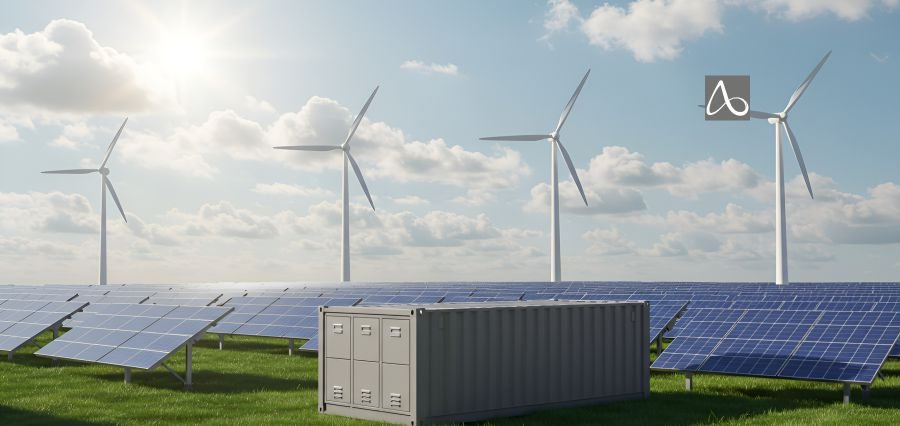The energy sector of the world is being transformed on a large scale since the world’s societies are very keen on sustainability, climate resilience, and decarbonization. Although more concern is being raised regarding the climate crisis, governments, companies, and researchers are investing a significant amount of money in sustainable energy technologies that would fulfill the world’s growing energy demands without destroying the environment. These technologies span across the board of an arc of technology from renewable energy in solar, wind, and water to next-generation technologies in storage, grid management, and efficiency improvement. Using these technologies, nations are not only striving to reduce their carbon footprint but are also making economic progress by creating green industries and green employment. Clean energy technology is no longer an add-on, but a core part of the strategy of leading firms and governments. Transition to cleaner energy systems is being driven as much by environmental necessity as by economic necessity propelled by declining costs of renewable energy over the past decade. Governments worldwide are establishing bold carbon-neutral and clean energy consumption goals, establishing enabling regulatory environments and funds.
Renewing Power with Renewable Energy
Of all the most tangible areas of sustainable energy innovation, one is renewable energy technology innovation and deployment. Solar, for instance, has applied fundamental efficiencies and costs to enable large-scale deployment in a residential, commercial, and industrial environment. Bifacial solar panels, concentrated solar systems, and floating solar farms are all increasing energy harvest and diversity. So too are off-shore windfarms and new turbine design being brought into play to deliver cleaner energy with little or no environmental degradation. Both hydro and bioenergy are their share in cleaning up the mix of renewable energies. New hydropower plants make use of advanced turbine technologies and computerized controls to optimize efficiency with a smaller environmental footprint.
Meanwhile, bioenergy research already transformed the organic residues from agriculture, forests, and even algae into clean fuels. These technologies collectively constitute an integrated secure and diversified energy mix, which not only reduces fossil fuel reliance but also reduces the greenhouse gas emissions. Integrating such power from renewable resources with readily accessible grids is a high technology challenge requiring innovative planning and control, and it is being addressed with new digital technology and smart grid solutions.
Optimizing Energy Storage and Grids
Although renewable energy sources promise much, their fluctuating nature threatens the security of electricity supply. This has sparked a record level of research and development of energy storage devices of paramount importance in providing an assured flow of electricity. Lithium-ion batteries are gaining market share with higher energy density and falling prices, but emerging technologies such as solid-state batteries, flow batteries, and advanced supercapacitors have the potential to revolutionize energy storage. These systems enable mass storage of electricity generated from renewable resources, supporting stability to feed even in the absence of sunlight or wind.
Additional to the energy storage technology development are grid optimisation technologies which involves more distribution and use of electricity. Smart grids utilize sensors, artificial intelligence and predictive analytics to enact real-time matching of supply and demand of energy. This allows greater inclusion of renewable energy, less loss of energy during transmission, and easy facilitation of demand-response methods that adjust the rate of usage based on availability. The connection of these storage systems with smart grid control makes the energy systems more resilient and sustainable, and this forms the way for a low-carbon future energy system not only environment-friendly but also economical.
Emerging Energy Innovations
With current renewable and storage technologies, next-generation innovations are making tomorrow’s renewable energy today. Green hydrogen, produced by electrolysis of renewable energy, will be an energy carrier that can be transported in industry, transport, and to generate power. Similarly, carbon capture, utilization, and storage technologies are making industry emissions reductions with beneficial byproducts. The technologies portend the increasing role of technology towards mitigating climate change and enabling a transition to clean energy systems.
The clean energy technologies of the future will be contingent on collaboration, investment, and policies of support. Collaboration between the private and public sectors will be necessary to develop research stimulus, advance early-stage technologies to commercial readiness, and deploy solutions worldwide. Governments will need to continue providing regulatory incentives, and businesses will need to invest in sustainable business and infrastructure. It can be accomplished by seeking international cooperation in the sharing of knowledge, confluence of standards, and offering technology transfer, particularly to the developing world with rising energy requirements and environmental conservation.
Conclusion
Breakthrough clean technologies are defining the new geography of the world, unveiling a cleaner and safer world. From clean manufacturing of renewable energy to storage and grid infrastructure, these technologies are lowering carbon emissions by staggering rates while driving economic growth. Emerging technology such as carbon capture and green hydrogen increasingly make the low-carbon future possible. A low-carbon future in sustainability terms will be provided by further collaboration of research centers, governments, and business together with strong policy support and enabling international coordination. It shall implement these innovations so that human beings can sustain its increasing energy requirements in an eco-friendly way so that there may be prosperity and a clean environment in the future.
Read Also: Reimagining Healthcare: Innovative Smart Health Solutions for Modern Living




